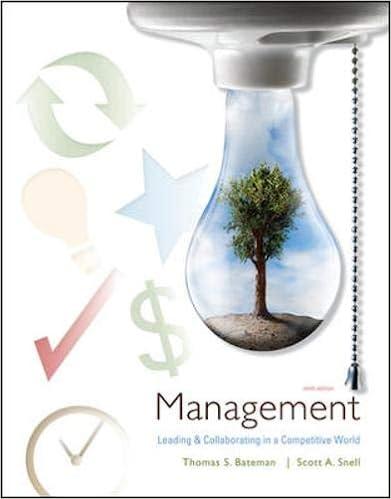In 2001, scientists at SC Johnson embarked on a huge task: inventorying all the raw materials used
Question:
In 2001, scientists at SC Johnson embarked on a huge task: inventorying all the raw materials used in their company’s products and analyzing them for their environmental impact. Their goal was to reduce SC Johnson products’ negative effects wherever possible. The team classified the raw materials into five categories—insecticides, propellants, resins, solvents, and surfactants—and then evaluated the impact of each substance on humans and the environment. Through this project, which became known as the Greenlist, SC Johnson identified hazardous compounds and potential pollutants and eliminated them. For example, as a result of the Greenlist process, the company removed 1.8 million pounds of volatile organic compounds (VOCs) from Windex’s formula and 4 million pounds of polyvinylidene chloride (PVDC) from Saran Wrap’s formula. As the Greenlist grew, the process of examining raw materials for toxicity became a routine step in SC Johnson’s product development—to design products correctly from the outset rather than reformulate them later to reduce their impact. Greenlist now also is used when the company designs packaging materials. It was through Greenlist, in fact, that SC Johnson decided to eliminate chlorine-based plastic packaging from its products. The company also licenses the use of its patented Greenlist software at no charge to interested organizations. In 2003, SC Johnson broke ground on a cogeneration energy plant, a $5 million system in which a turbine burns methane gas from landfill waste and produces electricity and steam for one of its largest manufacturing facilities. The plant is one of only a few in the United States that recover energy from waste methane. The plant’s savings in greenhouse gas emissions are roughly equivalent to keeping 3,200 cars off the road each year—or driving around the Earth 7,630 times. Also, the energy produced by the cogeneration plant saves SC Johnson about $2.4 million in energy costs per year and has greatly reduced its use of polluting coal-generated electricity.
• Since he became company CEO in 2000, Fisk Johnson needed to take on the role of change agent at SC Johnson. Why would top management’s commitment be important in creating the change for greater environmental responsibility? List as many reasons as you can for this commitment.
• Under Fisk Johnson’s leadership, SC Johnson’s Greenlist was developed by a team of scientists who believed the initiative was important for the environment. Why might a consumer products company want to lead such a change in its industry?
Step by Step Answer:

Management Leading And Collaborating In The Competitive World
ISBN: 9780078137242
9th Edition
Authors: Thomas Bateman, Scott Snell





